
 |
||||||||||||||
|
|
|
|
|
|
|
|
|
|
|
|
|
|
|
|
|
|
|
|
|
|
|
|
||||||||
|
|
|
||||||||||||||||
|
|
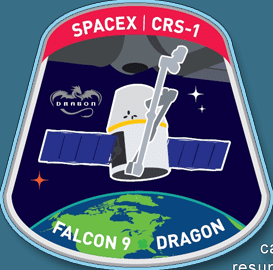 |
 |
|
||||||||||||||
 |
 |
|
|
||||||||||||||
|
|
|
||||||||||||||||
|
|
 |
 |
|
||||||||||||||
|
|
|
||||||||||||||||
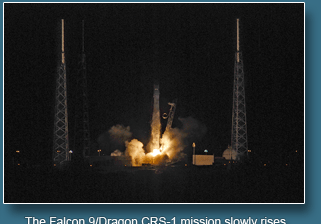 |
|
||||||||||||||||
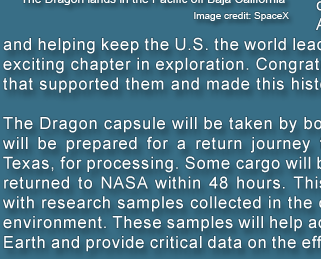 |
|
||||||||||||||||
|
|
|
||||||||||||||||
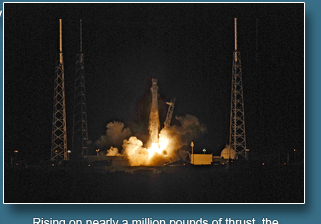 |
|
||||||||||||||||
|
|
 |
|
|
||||||||||||||
 |
|
||||||||||||||||
|
|
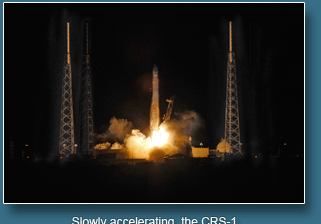 |
|
|
||||||||||||||
|
|
|
||||||||||||||||
|
|
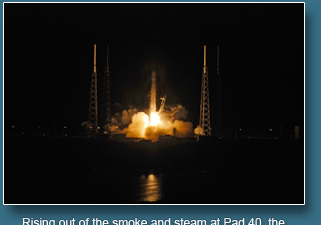 |
|
|
||||||||||||||
|
|
|
||||||||||||||||
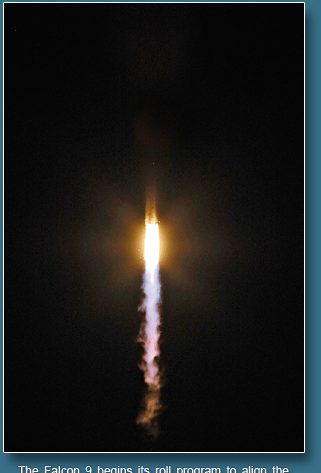 |
|
||||||||||||||||
|
|
|
||||||||||||||||
|
|
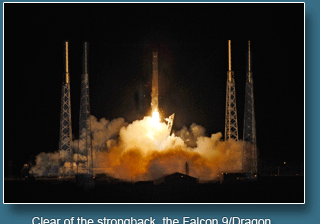 |
|
|||||||||||||||
|
|
|
||||||||||||||||
 |
|
||||||||||||||||
|
|
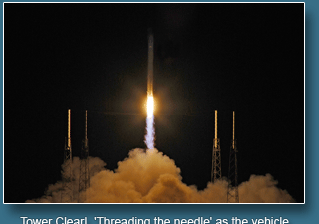 |
|
|||||||||||||||
|
|
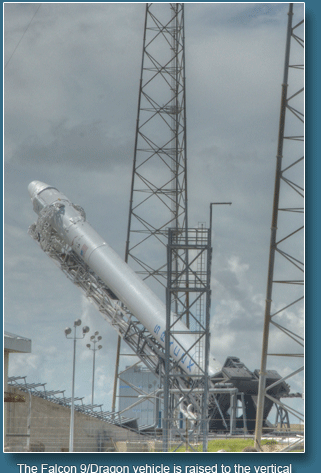 |
|
|
||||||||||||||
 |
|
||||||||||||||||
 |
|
||||||||||||||||
|
|
|
|
|
|
|
|
|
|
|
|
|
|
|
|
|
|
|

SPACEX DRAGON RETURNS FROM SPACE STATION WITH NASA CARGO HOUSTON -- A Space Exploration Technologies (SpaceX) Dragon spacecraft splashed down in the Pacific Ocean at 2:22 p.m. CDT Sunday a few hundred miles west of Baja California, Mexico. The splashdown successfully ended the first contracted cargo delivery flight contracted by NASA to resupply the International Space Station. "With a big splash in the Pacific Ocean today, we are reminded American ingenuity is alive and well and keeping our great nation at the cutting edge of innovation and technology development," NASA Administrator Charles Bolden said. "Just a little over one year after we retired the Space Shuttle, we have completed the first cargo resupply mission to the International Space Station. Not with a government owned and operated system, but rather with one built by a private firm -- an American company that is creating jobs and helping keep the U.S. the world leader in space as we transition to the next exciting chapter in exploration. Congratulations to SpaceX and the NASA team that supported them and made this historic mission possible." The Dragon capsule will be taken by boat to a port near Los Angeles, where it will be prepared for a return journey to SpaceX's test facility in McGregor, Texas, for processing. Some cargo will be removed at the port in California and returned to NASA within 48 hours. This includes a GLACIER freezer packed with research samples collected in the orbiting laboratory's unique microgravity environment. These samples will help advance multiple scientific disciplines on Earth and provide critical data on the effects of long-duration spaceflight on the human body. The remainder of the cargo will be returned to Texas with the capsule. The ability to return frozen samples is a first for this flight and will be tremendously beneficial to the station's research community. Not since the space shuttle have NASA and its international partners been able to return considerable amounts of research and samples for analysis. The Dragon launched atop a SpaceX Falcon 9 rocket from Cape Canaveral Air Force Station in Florida, on Oct. 7. It carried 882 pounds of cargo to the complex, including 260 pounds of crew supplies, 390 pounds of scientific research, 225 pounds of hardware and several pounds of other supplies. This included critical materials to support 166 scientific investigations, of which 63 were new. Returning with the Dragon capsule was 1,673 pounds of cargo, including 163 pounds of crew supplies, 866 pounds of scientific research, and 518 pounds of hardware. The mission was the first of at least 12 cargo resupply missions to the space station planned by SpaceX through 2016 under NASA's Commercial Resupply Services contract. SpaceX is one of two companies that built and tested new cargo spacecraft under NASA's Commercial Orbital Transportation Services (COTS) program. Orbital Sciences is the other company participating in COTS. A demonstration flight of Orbital's Antares rocket and Cygnus spacecraft to the station is planned in early 2013. NASA initiatives like COTS and the agency's Commercial Crew Program are helping develop a robust U.S. commercial space transportation industry with the goal of achieving safe, reliable and cost-effective transportation to and from the space station and low-Earth orbit. In addition to cargo flights, NASA's commercial space partners are making progress toward a launch of astronauts from U.S. soil in the next 5 years. SpaceX Dragon Successfully Attaches To Space Station Hawthorne, CA -- For the second time this year, a SpaceX Dragon spacecraft is at the International Space Station. Expedition 33 crew members Akihiko Hoshide and Sunita Williams today grappled Dragon and attached it to the station, completing a critical stage of the SpaceX CRS-1 cargo resupply mission. Hoshide used the station�s robotic arm to capture Dragon and guide it to the station�s Harmony module, and then Expedition 33 Commander Williams installed Dragon to Harmony�s common berthing mechanism, enabling it to be bolted in place for an expected 18-day stay at the station. Upon capture, Expedition 33 Commander Sunita Williams of NASA remarked, �Looks like we�ve tamed the Dragon.� Grappling was complete at 6:56AM ET, and at 9:03AM ET Dragon was attached to the space station. �This is a big moment in the course of this mission and for commercial spaceflight,� said SpaceX CEO and Chief Technical Officer Elon Musk. �We are pleased that Dragon is now ready to deliver its cargo to the International Space Station.� Next, the station crew will pressurize the vestibule between the station and Dragon and open the hatch that leads to the forward bulkhead of the spacecraft. The crew will then begin unloading Dragon�s cargo, which includes crew supplies, vehicle hardware, experiments, and an ultra-cold freezer for storing scientific samples. The mission, designated SpaceX CRS-1, is the first of at least 12 that SpaceX will perform under NASA�s $1.6 billion Commercial Resupply Services contract. Only SpaceX�s Dragon spacecraft is capable of both carrying significant amounts of cargo to the station and returning cargo to Earth. Dragon is expected to be released from the space station on October 28 with return cargo that will include used station hardware and more than a ton of scientific samples. Splashdown and recovery in the Pacific Ocean off the coast of southern California will follow the same day. SpaceX Launches First Official Cargo Resupply Mission To Space Station Cape Canaveral, FL � Space Exploration Technologies (SpaceX) today successfully launched its Dragon spacecraft aboard a Falcon 9 rocket on the first official cargo resupply mission to the International Space Station. The launch went off on schedule at 8:35 p.m. ET from Launch Complex 40 in Cape Canaveral, Florida. The SpaceX CRS-1 mission marks the first of at least 12 SpaceX missions to the space station under the company�s cargo resupply contract with NASA. On board the Dragon spacecraft are materials to support investigations planned for the station�s Expedition 33 crew, as well as crew supplies and space station hardware. Dragon � the only space station cargo craft capable of returning a significant amount of supplies back to Earth -- will return with scientific materials and space station hardware. The Falcon 9 rocket, powered by nine Merlin engines, performed nominally today during every phase of its approach to orbit, including two stage separations, solar array deployment, and the final push of Dragon into its intended orbit. Dragon will now chase the space station before beginning a series of burns that will bring it into close proximity to the station. If all goes well, Dragon will attach to the complex on October 10 and spend over two weeks there before an expected return to Earth on October 28. �We are right where we need to be at this stage in the mission,� said Elon Musk, CEO and Chief Technical Officer, SpaceX. �We still have a lot of work to do, of course, as we guide Dragon�s approach to the space station. But the launch was an unqualified success.� The CRS-1 mission follows a historic demonstration flight last May when SpaceX�s Dragon became the first commercial spacecraft to attach to the space station, exchange cargo, and return safely to Earth. The flight signaled restoration of American capability to resupply the space station, not possible since the retirement of the space shuttle in 2011. SpaceX�s First Commercial Resupply Mission to ISS Overview On the heels of a successful debut flight to the International Space Station in May, SpaceX is set to launch its next Dragon resupply mission to the orbital outpost. Launch of this first commercial resupply mission (SpaceX CRS-1) to the complex is set for 8:35PM EDT Sunday, October 7 from Launch Complex 40 at the Cape Canaveral Air Force Station, Florida. If all goes as planned, Dragon will arrive at the station on Wednesday, October 10, when it will be grappled and berthed to the complex for an expected two week visit. Dragon is scheduled to return to Earth on October 28 for a parachute-assisted splashdown off the coast of southern California. Dragon is the only space station cargo craft capable of returning a significant amount of supplies back to Earth, including experiments. Dragon will be filled with about 1,000 pounds of supplies, including critical materials to support the 166 investigations planned for the station�s Expedition 33 crew, of which 63 will be new. Dragon will return with about 734 pounds of scientific materials, including results from human research, biotechnology, materials and education experiments, as well as about 504 pounds of space station hardware. Background and Purpose SpaceX CRS-1 is the first of at least 12 missions to the International Space Station that SpaceX will fly for NASA under the Commercial Resupply Services (CRS) contract. In December 2008, NASA announced that SpaceX�s Falcon 9 launch vehicle and Dragon spacecraft had been selected to resupply the space station after the end of the space shuttle program in 2011. Under the CRS contract, SpaceX will restore an American capability to deliver and return significant amounts of cargo, including science experiments, to the orbiting laboratory � a capability not available since the retirement of the space shuttle. Building on Success Prior to this flight, SpaceX successfully completed two demonstration flights using Falcon 9 and Dragon under NASA�s Commercial Orbital Transportation Services (COTS) program. The second of those missions, from May 22�31, 2012, marked the first time that a private company had launched a spacecraft into orbit, successfully attached to the station, delivered a payload, and returned safely to Earth�a highly challenging technical feat previously accomplished only by governments. A Challenging Mission All spaceflight is incredibly complicated, from launch to recovery. Every component of the mission must operate optimally. Hardware, avionics, sensors, software and communications must function together flawlessly. If any aspect of the mission is not successful, SpaceX and NASA will learn from the experience and try again.